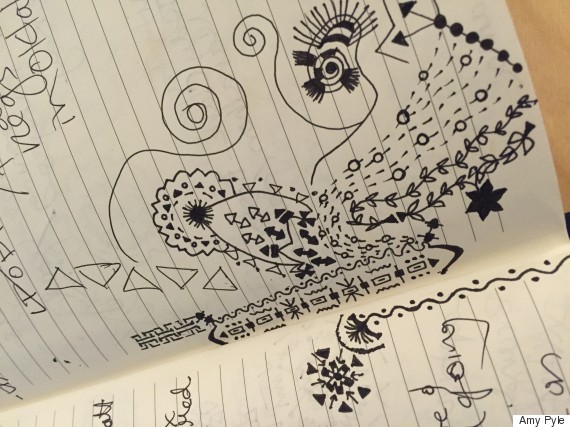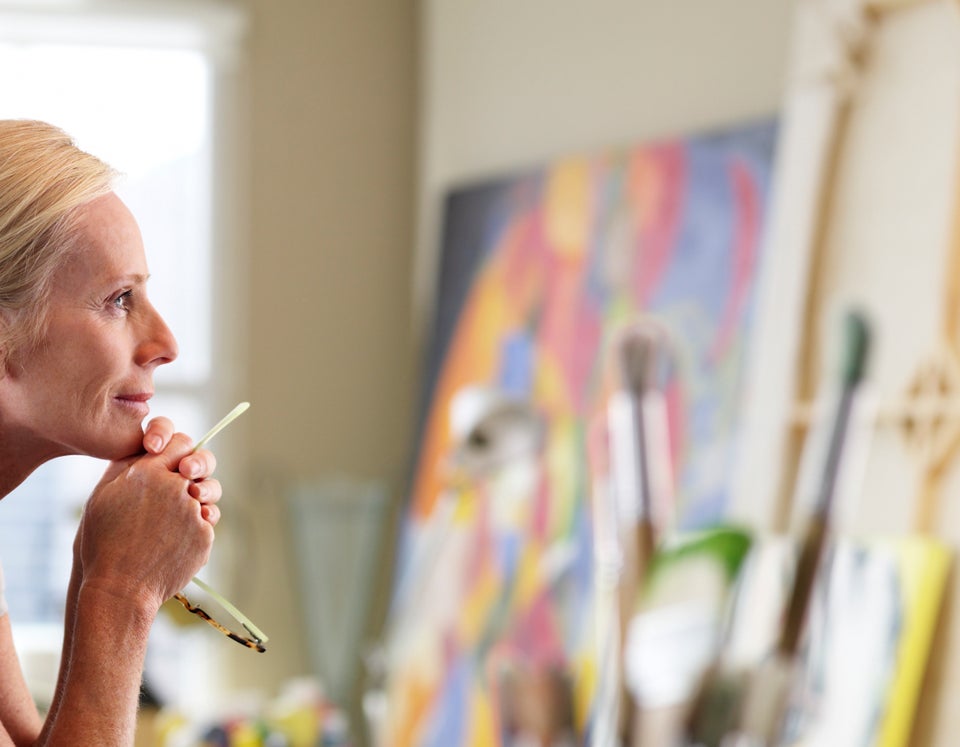While coloring books for adults are something of a trend, there's another artistic outlet that requires even less effort than colored pencils and markers. It may have more benefits, to boot.
Doodling -- the spontaneous act of drawing, typically in the margins of whatever one is really supposed to be working on -- is more than a humble distraction. While doodling gets a bad rap, it's actually associated with better learning, creativity and performance. Here are five of doodling’s benefits:
1. Doodling Helps You Concentrate

Amy Pyle, an editor and self-described multitasker, doodles in meetings or on conference calls to help her concentrate.
Research published in 2009 found that participants who doodled while listening to a phone call were able to recall 29 percent more information afterward than those who simply took notes.
Study author Jackie Andrade, a psychology professor at Plymouth University in the U.K., and others have hypothesized that doodling and listening are uniquely suited to each other. Doodling engages the brain’s “executive resources” -- processes that help us plan, multi-task and concentrate. Engaging our executive resources with doodles while we’re listening to a lecture or phone call makes sure that those resources don’t wander off on their own to think about the grocery list or our plans for the weekend.
2. Doodling Makes You A More Productive Employee
 Thy Anh Vo finds it freeing to doodle caricatures of herself
Thy Anh Vo finds it freeing to doodle caricatures of herself
Anaheim, California journalist Thy Anh Vo told HuffPost that doodling helps her keep accurate records of the meetings she reports on for her job. While she described doodling as “mindless,” she also said it helps her capture more details than exhaustive note taking does.
“When I'm reporting on city council meetings, for example, it gets kind of dizzying to keep track of all the people in the room, so sometimes I’ll draw someone’s face, clothes, mannerisms (what their shoes look like, the way their shoulders bend forward) just because I can’t think of the words to describe them,” she wrote. "It also seems to help me remember who they are and where they fit into the room at the time, even if I'm not taking notes on those things."
3. Doodling Can Also Keep You In The Present Moment
Jesse Prinz, a philosophy professor at City University of New York Graduate Center who studies doodling in the context of research on art, finds the practice is optimally suited for oral learning. He says doodling keeps people in a state of “pure listening."
“Doodling helps hit that sweet spot between listening too much and listening too little," Prinz told HuffPost. "It keeps you in a state where your mind can’t wander, and your mind can’t also reflect or think more deeply about what you’re hearing... it’s to such a great extent that if I do not doodle, I find myself having difficulty concentrating. I came to the conclusion that what doodling does for me in part is that it keeps me very receptive to information."
4. Doodling Is An Outlet For Every Day Creativity
 Capitulo created this doodle when she was "very, very, very upset one night" in 2014.
Capitulo created this doodle when she was "very, very, very upset one night" in 2014.
Prinz said we should never lose sight of the fact that doodling as creative expression is a worthy goal in and of itself. And even for professional artists, doodling can be an underused tool.
Sculptor and painter Lorina Capitulo of North Babylon, New York, struggled on and off with feelings of creative block and artistic inadequacy after moving to the U.S. from the Philippines. But when she came across her son’s colored Sharpie markers, she began using them to pass the time before going to work or decompress before bed.
“While doodling, I reflect on so many things happening in my life,” she told HuffPost. She soon realized her creations were also giving her that same “high” she remembered from painting and drawing back in high school. She credits the doodling with unlocking a new avenue for her artistic expression.
5. Doodling Helps You Generate Ideas

Another snapshot from Pyle's notebook.
"Doodling is an enjoyable activity, and that positive emotion makes us more creative by opening us up to more exploratory avenues of thought,” said Prinz. "If you spend half an hour doing something creative, when someone gives you a problem you will think about it in fresh ways."
Andrade speculates that because doodling distracts people from consciously thinking about a problem, it allows for a “subconscious incubation of the solution.” She likened the process to dreaming. “The same thing can happen when sleeping,” she said. “You spend all day trying to solve a problem without success, only to wake up in the morning thinking ‘Aha! That’s the answer.’"
Doodles can be anything, from names or signatures repeated over and over again to cartoons to abstract patterns and scribbles. The next time you find yourself in a meeting or lecture and unable to focus, consider taking your pen to the margins for a little concentration boost.
